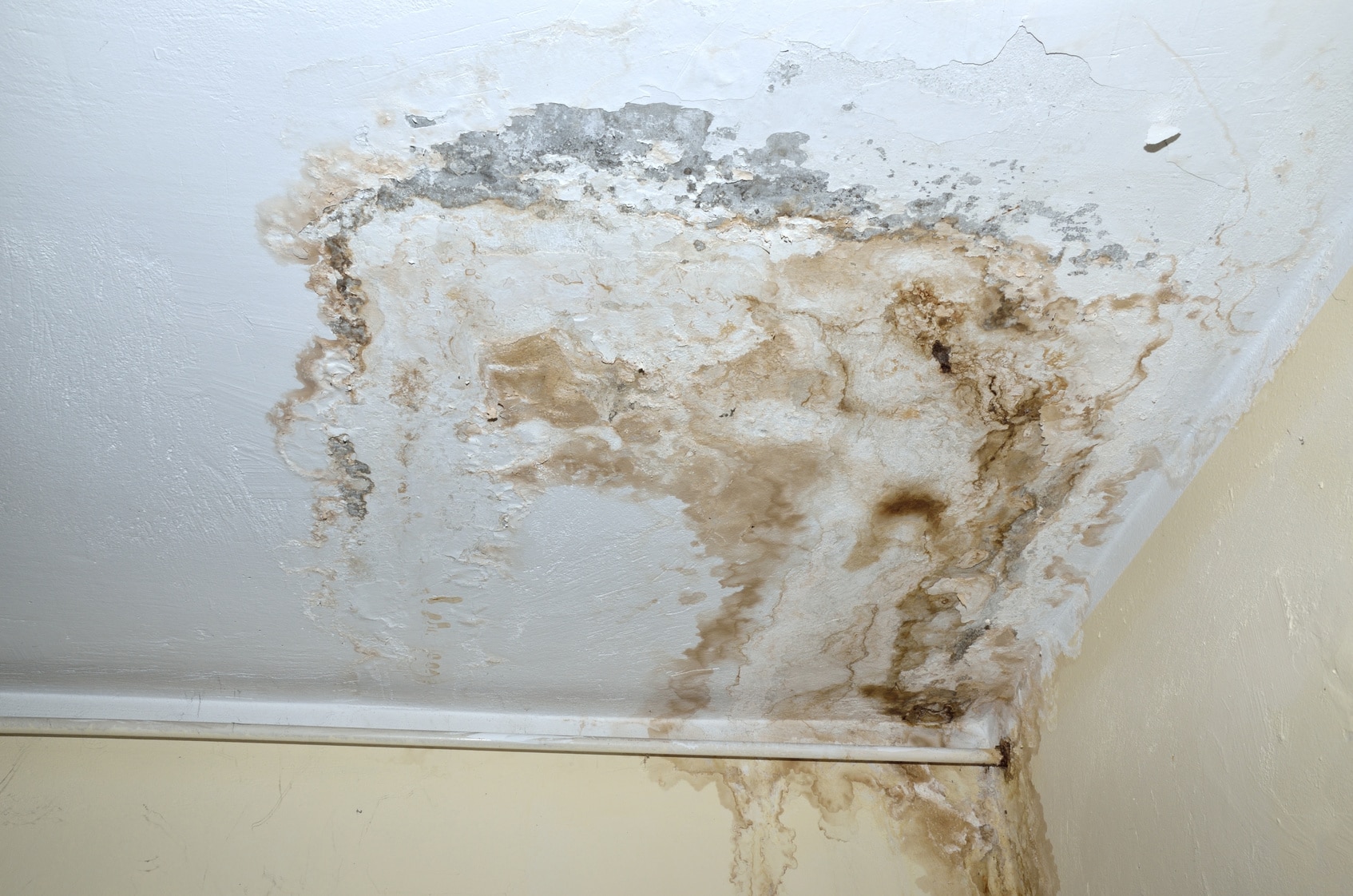Mold appears in many homes on the ceiling due to humidity and the room's darkness or poor ventilation. It is crucial to remove it right away since it not only gives an unsightly appearance but is also toxic and can be dangerous. It can cause anything from an allergic reaction or cough to difficulty breathing.
It is recognized by its normally black, gray, or white appearance and its peculiar smell. Repairing the harm that has been done is important to prevent it from forming again, usually a crack or leak that lets moisture through. You have to clean it well and eliminate it, in addition to preventing it from appearing on future occasions. Certain types of mold must be professionally removed due to their toxicity. Read on!
Ventilate the Room and Fix the Leak
First of all, once you know that there is mold, you must ventilate the affected room. Mold, as we have said, is toxic and better if the room is ventilated. If it is closed, you can put a dehumidifier or a fan. It also forms in spaces with high humidity and little ventilation or light, such as storage rooms or basements.
Read also: How to Remove Mold Stains from Shoes.
Remove all the boxes you had around or the furniture, and see that they have not been contaminated since it grows on any organic surface (boxes, rugs, etc.). Don't worry if mold has spread because it can be cleaned and removed.
It would also help if you looked for the problem that caused it, which is probably a leak. When there are any, the water collects, and mold forms. You should fix the leak as quickly as you can so that the water stops seeping because if you clean the mold but do not repair the leak, it will grow again.

Prevent Mold on the Ceiling
Since mold grows in dark places, it is best to open windows to air and light. If you can't, add some artificial lighting in the room. This will prevent the mold colony from growing on the roof. Also, if it is artificial light, it will provide heat, which prevents mold from appearing.
You must improve the thermal insulation of your house so that it does not appear again. If you do not have thermal insulation, the change from the cold outside to the heat inside the house produces a condensation effect of humidity that makes the appearance of mold more favorable. Thermal insulation will be a barrier, especially in areas close to heating, ventilation, or air conditioning systems.
If the mold has occurred in the bathroom, which is quite common due to these areas' humidity, hold the screen or curtain shower open and vent the bath for at least 15 minutes. For future occasions, you can place an extractor that will help reduce humidity. Towels are best hung in another room until the mold is gone, and the room has been conditioned again. When you shower, instead of leaving the wet towel in the bathroom, it is advisable to hang it somewhere outdoors until it dries.
The same way it happens when you wash clothes. If you don't have a dryer, try to keep your clothes wet outside or in very well ventilated areas.
How to Remove Mold from the Ceiling- Step by Step
Mold needs to be removed immediately, as it can reproduce easily. To remove mold from the ceiling, use a ladder, and carefully approach the area. You must consider the type of material to know if it is necessary to call a specialist.
For example, porous surfaces such as gotelé, plaster, drywall, or wood are more difficult since only surface mold can be removed. Therefore, it would be convenient to call a professional to obliterate it and clean the surface stain independently. Also, the porous ceiling will have to be replaced as otherwise, it could grow back.
You must use the appropriate material such as gloves to protect yourself from mold and the products you will use. And the clothes you use should be washed with hot water to remove any debris or spores that may have fallen. Also, it would be convenient to use a mask and protective glasses. The room must be as ventilated as possible at all times. Follow these steps to remove mold from the ceiling.

- First, remove any paint that may have broken or flaked with a putty knife. This way, we make sure that there are remains underneath.
- To eliminate mold, there are several solutions. One of the most used and that works very well is a mixture of borax, vinegar, and water. Use two tablespoons of borax with a quarter cup of vinegar and two whole cups of hot water. It is a good solution to kill mold while reducing the chances of reappearance.
- Other ingredients like bleach, vinegar, hydrogen peroxide, or ammonia can clean up the mold. However, they are not as effective. Furthermore, bleach cannot be used on porous surfaces and could produce polluting gases.
- Put the borax, vinegar, and water solution in a jar and apply it directly to the mold, being careful not to drip. Scrub it with a sponge, better if it is the hard part to remove it. Do this until the mold is completely gone.
- Occasionally soak the sponge in clean water so the mold doesn't spread, so it would be nice to have a bucket of clean, warm water nearby. Go changing it from time to time.
- Removing mold is a difficult task, especially if there is a lot of it, but it is essential to eradicate it and make sure it is clean.
- Once you have removed the stain, spray the solution that we have prepared again and left it on the ceiling. In this way, you will prevent it from reappearing. Let it dry and air out for a day.
Also read: How to Remove Musty Smell from Shoes.
Finally, before repainting the ceiling, you should sand it down to eliminate any discoloration or residue if you want to do it. Use an anti-humidity or anti-mold paint to prevent future occurrences. It is better to place an extractor or dehumidifier in that room.
Adapted and translated by The Cop Cart Staff
Sources: Uncomo







